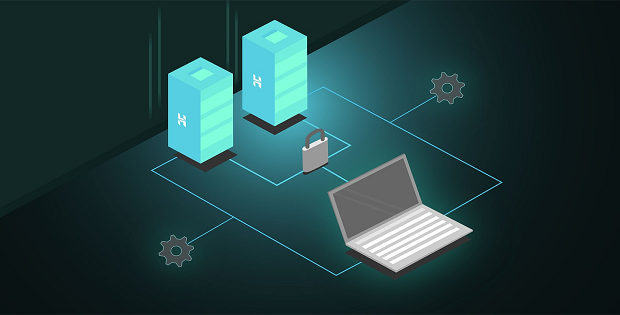Different Types of Database Security in DBMS
Last Updated on 8 months by Touhid
Database security refers to the process of protecting and safeguarding the database from unauthorized access or cyber-attacks. There are different types of database security such as encryption, authentication, backup, application security, and physical security which should implement in your business. In this post, we will explain each types of database security technique in order to secure the database.
Table of Contents
Types of Database Security
The main purpose of database security is to keep secure sensitive information of a database and maintain the database confidentiality, integrity, and availability. The types of database security are key techniques which are used to provide the database security.
Database security is important to protect from cyber-attacks which can lead to financial loss, damage of brand reputation, business continuity and customer confidence. The main security types of database are as follows:
- Authentication
- Database Encryption
- Backup Database
- Physical Security
- Application Security
- Access Control
- Web Application Firewall
- Use Strong Password
- Database Auditing
1. Authentication
Database authentication is the types of database security that verify the user’s login credentials which stores in database. If user’s login credentials match in database then user can access the database. That means the user has authentication to login into your database.
If an authentic user has some privilege to access the data then he can’t access the other data which are out of privilege. No unauthorized or malicious user can’t login into your database. So, database authentication plays an important role for ensure database security.
2. Database Encryption
Encryption is one of the most effective types of database security which protect your database from unauthorized access during storing and transmission over the internet.
There are different types of encryption algorithm such as AES, MD5, and SHA 1 which are used to encrypt and decrypt the all types of sensitive data.
Typically, an encryption algorithm transforms the plain text data into ciphertext of unreadable formats within a database. So, if hackers get access your database then they can’t use your data until the data is decrypt.
It is highly recommended to you that encrypt your sensitive data while storing into database because it provides security and protect from cyber-attacks.
3. Backup Database
Backup is another type of database security which used to restore data in case of data loss, data corruption, hacking, or natural disasters. It copying or archiving the database in real time on a secondary storage.
If you configured the primary and secondary server at same place and if the primary server is destroyed then there has a chance to destroy the secondary server. So, you can’t run your application and your system will shut down until you recover.
That’s why it is suggested that, always configure the secondary server physically in separate location in order to ensure database security. In that case, if the primary server is down then you can recover database from secondary server.
There are different types of database backup such as full backup, differential and incremental backup. You can set your backup plan as per your business need and time.
However, you can consider the following strategy to backup database:
- Determine the backup schedule and backup types
- Make ensure database backup regularly
- Ensure your backup location is physically separate
4. Physical Security
Physical database security is the protection of database server room in order to protect from unauthorized access. Database server should be located in secured and climate-controlled environment in a building.
Only DBA (Database Administration) and authorized IT (Information Technology) officer can enter into the server room. If your database server is in cloud data center then your service provider will take necessary action to secure your database. In that case, before hosting your database in a cloud you can ask them how they will secure your database?
It is also suggested that, if possible then don’t host the database server and application on the same server. You should physically isolated both server for security purposes and performance also.
Even you can make a policy for database server room which may include room is locked all times, only authorized IT officer can check the server room environment etc.

5. Application security
You have to secure your application and database in order to protect from web attacks such as SQL injection. SQL injection is the most common web attacks where hacker control application’s database to hack sensitive information or destroy the database.
In this technique, the attacker adds the malicious code in SQL query, via web page input. It is occurring when an application fails to properly sanitize the SQL statements. So, attacker can add their own malicious SQL statements to access your database for malicious purposes.
To protect from SQL injection attacks, you can secure application by applying the following prevention methods:
- Use of Prepared Statements
- Use a Web Application Firewall
- Updating your system
- Validating user input
- Limiting privileges
- Use Stored Procedures
6. Access Control
To ensure of database security you have to restrict the access of database by unauthorized users. Only authorized user can get access the database and no unauthorized can’t access the database. Create user accounts by DBA who will access the database and set a role and limit what they can access in your database.
So, access control is types of database security which can secure your database by restricting unauthorized users’ access.
7. Web Application Firewall
A web application firewall or WAF is an application based cyber security tool which is the database security best practice. WAF has designed to protect applications by filtering, monitoring and blocking HTTP malicious traffic.
This database security measure controls who can access the application and prevent intruders from accessing the application via the internet. To secure your application from malicious users you should use a web application firewall which will protect your application, database.
You can use one of the following Web Application Firewall in your system:
- Fortinet FortiWeb
- Citrix NetScaler AppFirewall
- F5 Advanced WAF
- Radware AppWall
- Symantec WAF
- Barracuda WAF
- Imperva WAF
- Sophos XG Firewall
8. Use Strong Password
This is simple but very important tips for ensure database security. As a DBA or IT officer you should use strong password for database login and never share your password with others.
If you use easy password such as your mobile no, employee id, date of birth which is known to hackers and they will try to login using these passwords. As a result, you will lose your database control.
So, create a strong password for database login using combination of letters, numbers, special characters (minimum 10 characters in total) and change the password regularly.
For example: T#$jk67@89m* can be a strong password for your database login.

Learn more How to create a Strong Password?
9. Database Auditing
Auditing is very important types of database security control which can help to detect and identify of unauthorized access to your DBMS (Database Management System).
Database auditing regularly check the log files for who access the database, when they accessed, how long time stay there and what they did in database. You can easily find out if there is unauthorized access to database server.
Database auditing is type of database protection which can provides overall monitoring for database security of your organization.
Conclusion
Finally, database security is one of the most important part of a website and web application. If you properly fail to secure your database then attacker can take access your database.
So, database security is essential to protect from cyber-attacks which can lead to financial loss, damage of brand reputation, business continuity and customer confidence. We have explained different types of database security. Hope the article will be helpful for you.
Affiliate Disclosure : Cyberthreatportal is a participant in the Amazon Services LLC Associates Program, an affiliate advertising program designed to provide a means for website owners to earn advertising fees by advertising and linking to amazon.com.





